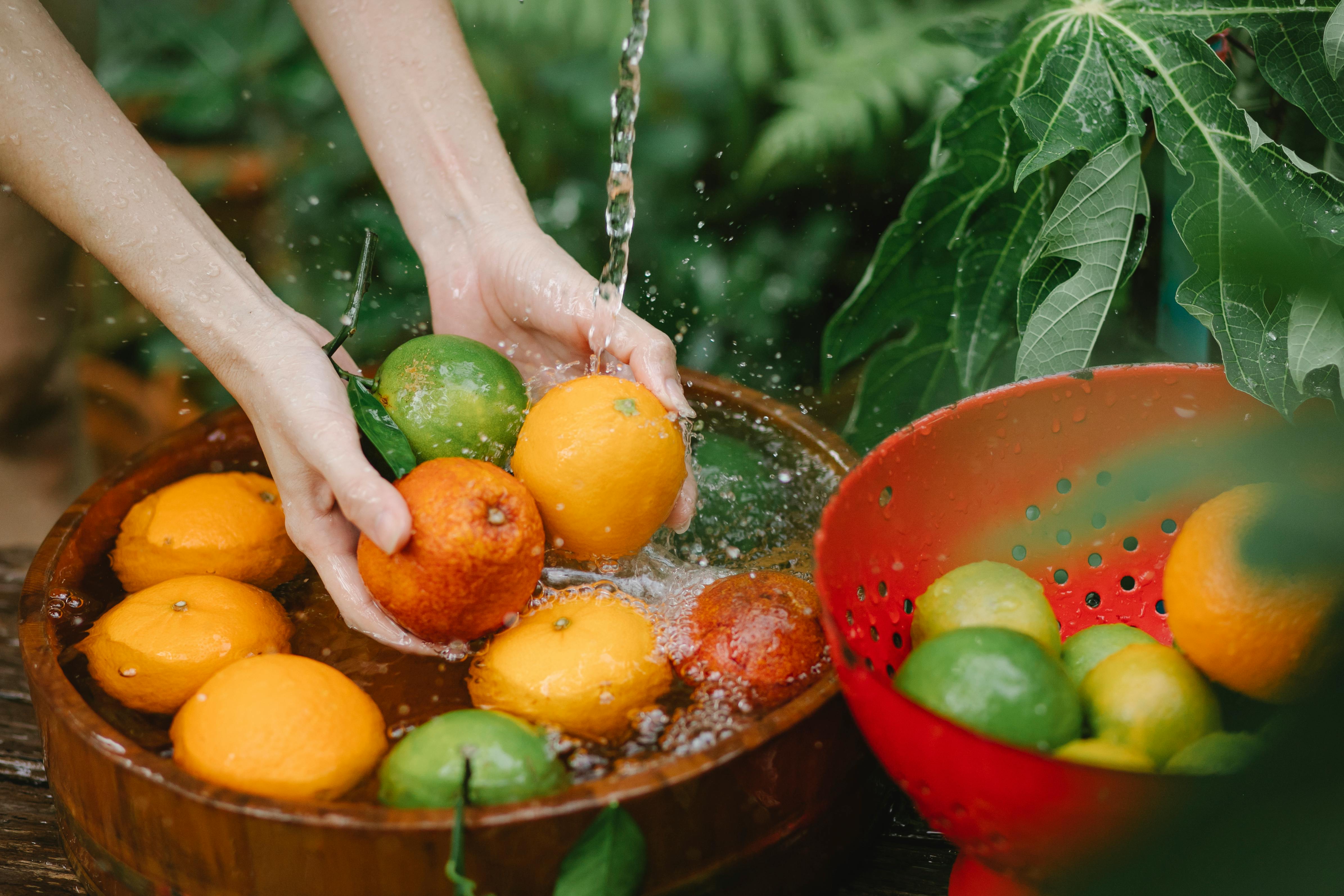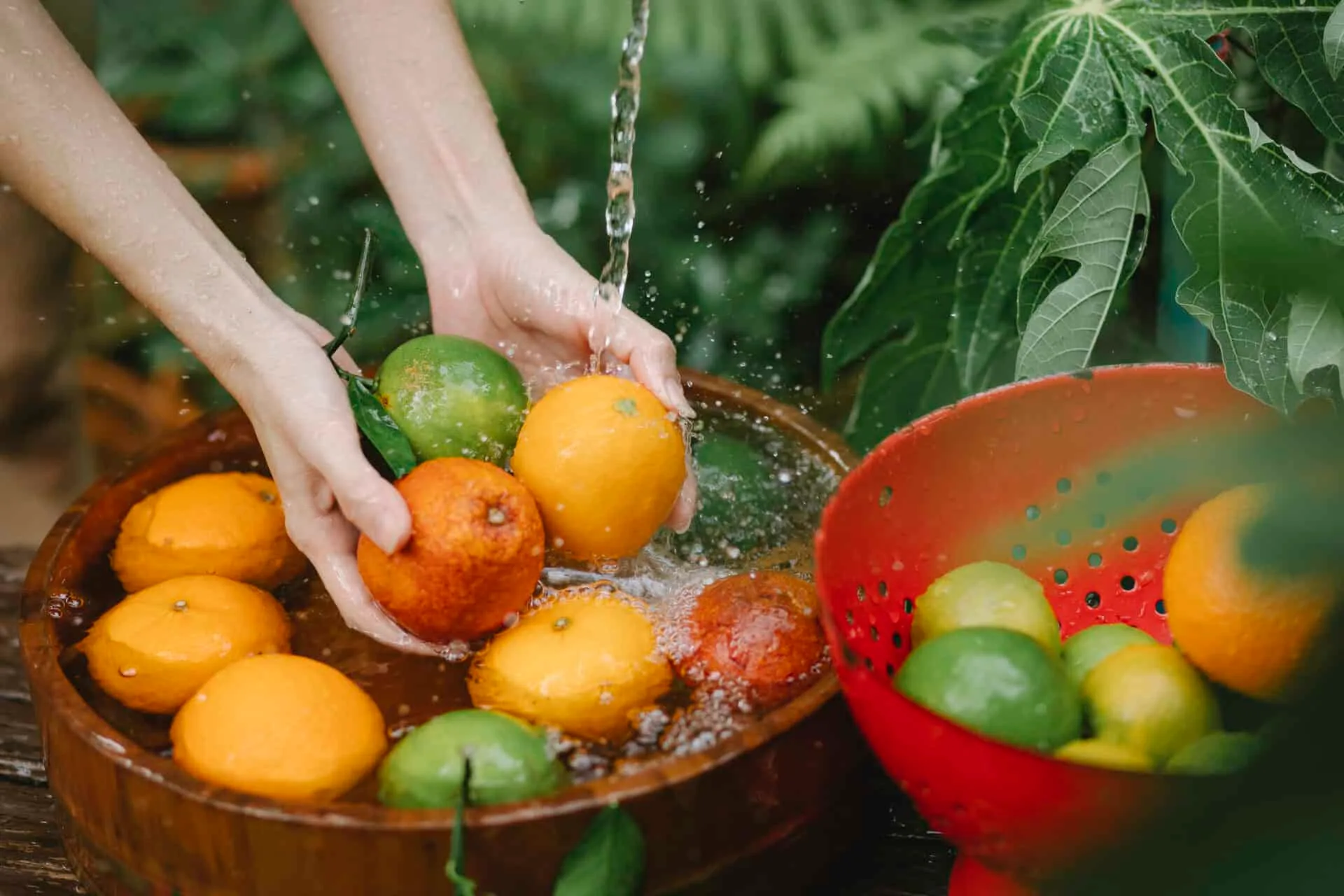It is important to take care of our health by eating clean and nutritious food. But have you ever considered washing your fruit with baking soda? It turns out that there are a number of benefits to washing your fruit with baking soda, including removing dirt, bacteria, wax, and pesticide residue that could be on the surface of the fruit. In this article, we’ll explore the pros and cons of washing fruit with baking soda and provide tips on how to do it safely.Baking soda, also known as sodium bicarbonate, is a white crystalline powder that is naturally alkaline. It has a variety of uses in cooking, cleaning and personal care products. When mixed with an acid, baking soda reacts by producing carbon dioxide which can be used to leaven breads and cakes, or to neutralize odors and freshen laundry. Baking soda can also be used as a mild abrasive to scrub surfaces in the kitchen or bathroom.
How Does Baking Soda Affect Fruits?
Baking soda, also known as sodium bicarbonate, is a common ingredient that can be used to affect the taste, texture and appearance of fruits. It can be used to help prevent discoloration, soften fruit and enhance flavor. When added to fruits before cooking, baking soda can help make them more tender and flavorful.
Baking soda is alkaline and reacts with the natural acids in fruit when added to water. This reaction creates carbon dioxide gas bubbles which help break down the cell walls of the fruit. This softens the fruit and also helps to retain its flavor and color. Baking soda can also be used to reduce bitterness in some fruits like rhubarb or apples.
When baking or boiling fruits, it is important not to use too much baking soda as this may cause a soapy taste in the finished dish. Generally 1/4 teaspoon of baking soda for every cup of liquid should be enough for most recipes. The high alkalinity of baking soda can also cause some fruits to discolor if left too long on their skins before cooking. To prevent this from happening, it is best to prepare the fruit shortly before adding it to a recipe.
In summary, baking soda can be used to affect the taste, texture and appearance of fruits when added before cooking. It helps soften them and enhances their flavor but it must be used carefully as too much can cause a soapy taste or discoloration in some cases.
Can Baking Soda Kill Pathogens on Fruits?
Baking soda, or sodium bicarbonate, has been used for centuries as a natural cleaning product. It is also known for its ability to kill certain bacteria and fungi. Therefore, it is possible that baking soda can be used to kill pathogens on fruits and vegetables.
Baking soda is a mild alkaline solution that works by disrupting the cell walls of some bacteria. This action can effectively kill some bacteria, including Salmonella and E. coli. However, it is important to note that baking soda will not be effective against all pathogens; it is not effective against some viruses or parasites such as norovirus or Cryptosporidium.
In addition to killing bacteria, baking soda may be able to reduce the amount of pesticide residue on fruits and vegetables. Studies have found that soaking produce in a solution of baking soda and water can reduce pesticide residues on the surface of the produce by up to 95%.
To use baking soda as an antimicrobial agent on fruits and vegetables, create a solution by mixing 1 teaspoon of baking soda with 2 cups of water. Soak the produce in this solution for 15–20 minutes before thoroughly rinsing them off with clean water. It is important to note that this method may not completely remove all bacteria; therefore it is still important to properly wash and sanitize your produce before consuming them.
In conclusion, while baking soda can kill some pathogens on fruits and vegetables, it will not be effective against all types of bacteria or other microorganisms such as parasites or viruses. Therefore, it is important to use proper food safety practices when handling and consuming fresh produce.
Are There Risks of Using Baking Soda on Fruits?
Using baking soda on fruits can be an effective way to remove pesticide residue and other contaminants. However, there are also some potential risks to consider when using baking soda on fruits. Baking soda can have a very alkaline pH, which can damage some fruits and vegetables if it is not used properly. In addition, baking soda can leave behind a chalky residue that can be difficult to rinse off.
Baking soda is often used as a natural cleaner and it is generally considered safe for use on produce. However, it is important to use the proper concentration of baking soda when washing fruits and vegetables. Too much baking soda can damage delicate produce, while too little may not effectively remove contaminants. To ensure that you are using the correct amount of baking soda, it is best to follow the instructions on the packaging or consult with an expert before using it on your produce.
In addition to diluting the baking soda correctly, you should also rinse your produce thoroughly after washing with baking soda. The alkaline pH of the baking soda could leave behind a chalky residue that could make the fruit or vegetable taste bitter or unpleasant. Therefore, it is important to make sure that all traces of the baking soda are washed off before consuming them.
Overall, using baking soda on fruits and vegetables can be an effective way to remove contaminants from them but there are some risks associated with its use as well. It is important to use the proper concentration of baking soda and rinse your produce thoroughly after washing in order to avoid any potential damage or unpleasant tastes caused by its alkaline pH.
Benefits of Washing Fruit With Baking Soda
Washing fruits with baking soda has a variety of benefits. Baking soda is a natural disinfectant that can be used to remove dirt, bacteria, and other contaminants from fruits and vegetables. It is also effective in removing waxes and coatings that may have been applied to the fruit in the production process. Additionally, baking soda can help to reduce pesticide residues on fruits and vegetables.
Baking soda can also be used to enhance the flavor of certain fruits by helping to break down some of the natural acids found in them. This reduces the overall tartness of the fruit, making it easier to enjoy.
Finally, washing fruit with baking soda can help preserve its nutritional value. Baking soda helps to remove bacteria that may be present on the surface of the fruit, which could otherwise cause spoilage or reduce its nutritional benefits over time. Additionally, it helps to prevent oxidation that may occur when fruits are not properly washed before consumption. This helps maintain their nutritional value for a longer period of time.
Overall, washing fruit with baking soda is a great way to ensure that you are getting the most out of your produce while also protecting yourself from potential contaminants that may be present on their surfaces.

Washing Fruits With Baking Soda
Washing fruits with baking soda is an effective and natural way to remove dirt and wax from them. Baking soda is alkaline in nature making it a great natural cleaner for fruits. To wash your fruits with baking soda, mix together 1 teaspoon of baking soda with 2 cups of water in a bowl. Dip your fruits into the solution and gently rub them to remove any dirt or wax. Once you are done, rinse the fruit with clean water and let it air dry or pat it dry with a paper towel.
Baking soda is also effective in removing pesticide residue from your fruits, so adding a few tablespoons of baking soda while washing your fruits can be beneficial for removing these residues. For best results, let the solution sit on the fruit for 5-10 minutes before rinsing off.
To make sure that all the dirt and residue has been removed, you can also spray some white vinegar on your fruit after washing with baking soda. The acidity of vinegar will help to remove any remaining residue from the surface of the fruit. After spraying vinegar on your fruit, rinse it off with clean water and let it air dry or pat it dry with a paper towel.
Conclusion
Overall, washing fruits with baking soda is an easy and safe way to make sure that they are free of dirt and wax as well as pesticide residues. To get the best results, mix together 1 teaspoon of baking soda in 2 cups of water and let the solution sit on the fruit for 5-10 minutes before rinsing off. Finally, spraying some white vinegar on your fruit after washing will help to remove any remaining residue from the surface of the fruit.
Different Types of Fruits Require Different Cleaning Methods With Baking Soda
Cleaning fruits can be a tedious task, but using baking soda can make it easier. While baking soda is a great way to clean fruits, different types of fruits require different cleaning methods with baking soda.
Citrus fruits such as oranges, lemons, and limes should be cleaned with a mixture of two tablespoons of baking soda and one quart of warm water. After mixing the ingredients together, use a soft cloth or sponge to gently rub the fruit with the solution. Then rinse the fruit in cold water and let it dry completely before eating or storing.
Soft-skinned fruits such as peaches, plums, and apricots should also be cleaned with baking soda but in a slightly different way. To clean these types of fruits, mix one teaspoon of baking soda and one quart of warm water together in a bowl. Dip the soft-skinned fruit into the solution for two to three minutes then rinse off with cold water and let dry before eating or storing.
Fruit that has hard skin such as apples should be cleaned using baking soda along with vinegar. To clean hard-skinned fruit like apples, mix one teaspoon of baking soda and two tablespoons white vinegar with one quart of warm water in a bowl. Use a soft cloth or sponge to gently rub the mixture onto the fruit then rinse off with cold water and let dry before eating or storing.
No matter what type of fruit you are cleaning, always make sure to wash your hands thoroughly before handling any produce to avoid cross contamination from bacteria on your hands. Baking soda is an effective method for cleaning many types of produce but remember that different types of fruits require different cleaning methods when using it.
Washing Fruit With Baking Soda
Washing fruit with baking soda can help to remove any unwanted bacteria, dirt, and debris that may be present on the surface. While it is not necessary to wash fruit with baking soda, it can be beneficial in some cases. Washing fruit with baking soda can also help to improve the taste and texture of the fruit, as it can help to remove any bitter or sour notes that may be present.
When washing fruit with baking soda, it is important to use a very small amount of the substance. Too much baking soda can alter the taste and texture of the fruit, making it unappetizing. To use baking soda for washing fruit effectively, it is best to dissolve a teaspoon of baking soda in a cup of warm water and use this solution to gently wash the fruits.
When using this method of washing fruit with baking soda, it is important to pay close attention to the texture and flavor of the fruits before and after being washed. For most fruits, there should not be any noticeable change in taste or texture; however, some fruits may appear to have a slightly sweeter flavor or softer texture after being washed with baking soda. It is also important to rinse the fruits thoroughly after washing them so that no residue remains on them before eating them.

Conclusion
Washing your fruits and vegetables with baking soda can be a safe and effective way to reduce the levels of bacteria, waxes, and pesticides. The results suggest that washing with baking soda can reduce the levels of potentially harmful bacteria and keep your produce safe to eat. It is important to remember that baking soda is a mild abrasive, so it should be used sparingly to avoid damaging delicate produce.
In conclusion, washing your fruits and vegetables with baking soda can be an effective way to reduce the levels of bacteria and waxes on the surface. Baking soda is also a safe alternative to harsh chemicals or detergents for cleaning produce. Therefore, if you are looking for a natural way to clean your fruits and vegetables, consider using baking soda.



